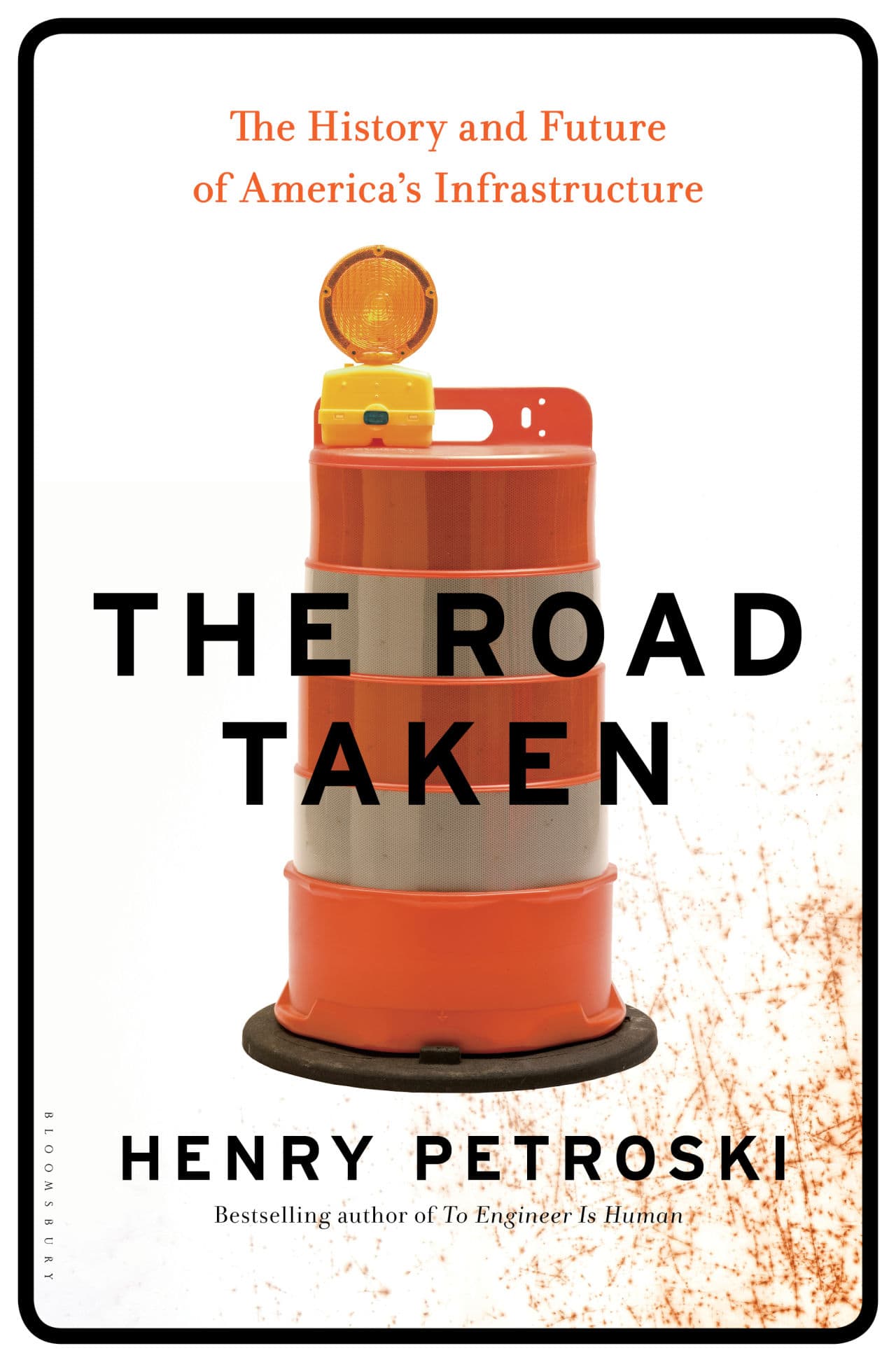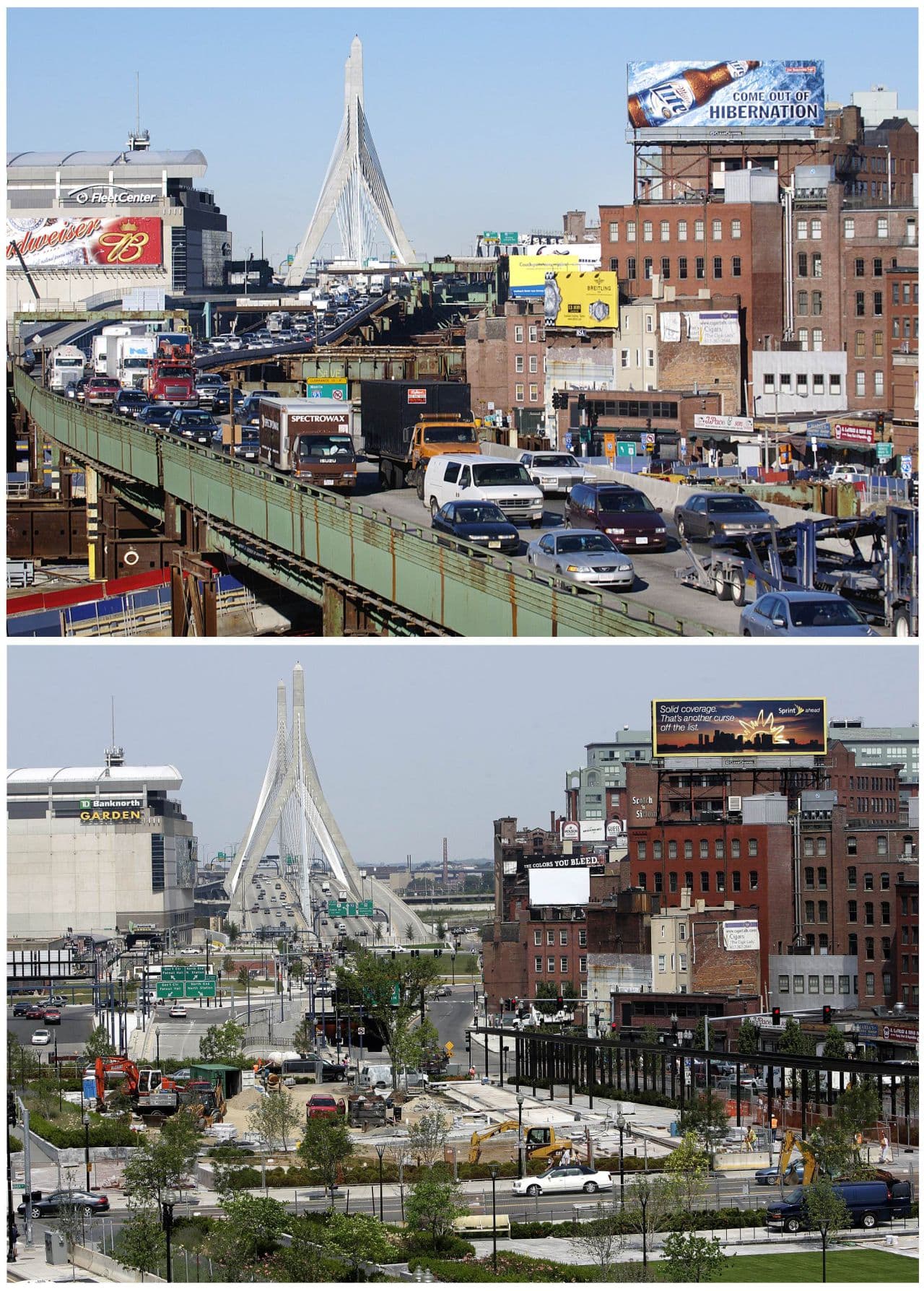Advertisement
Henry Petroski Digs Into America’s Infrastructure In ‘The Road Taken'
Now in his 70s, Henry Petroski — engineer, professor, author — maintains a deep sense of wonder at how the ground-level details of everyday life work. He also possesses a detective-like talent for deciphering why they sometimes fail. Petroski has shared his insights in numerous engaging and enlightening books, from the 1980s best-seller “To Engineer is Human: The Role of Failure in Successful Design” to the 2014 “The House with Sixteen Handmade Doors: A Tale of Architectural Choice and Craftsmanship,” a study of the Maine home in which he and his wife live for part of the year.

With “The Road Taken: The History and Future of America’s Infrastructure,” Petroski turns his keen eye to our nation’s roads, bridges, water systems and public transit — and transforms what could be dry-as-gravel content into an engrossing, thought-provoking narrative. He understands the critical role infrastructure plays in a society, in how — as he notes — it enables “a civilization to function in a civilized way."
There could hardly be a better time for a considered view of our nation’s infrastructure — with the unfolding water contamination horror in Flint, Michigan, and ongoing reports from cities across the country of dangerously weakened roads and bridges.
It’s no accident that many of Petroski’s book titles include words like “design,” “role” or “adventures.” Like those, “The Road Taken” is girded with very human elements of choice, negotiations and consequences — all firmly set within their eras. You need context, for example, to see why in the 1950s, Boston’s elevated Central Artery might have seemed a good idea. With no practical way to widen streets built in the Colonial era, why not add a highway above the streets? In reality, as Petroski writes, it immediately proved to be “ugly to look at, unappealing to travel under, and frustrating to drive upon.”

Other far-reaching decisions are illuminated with backgrounds national, personal or both. President Eisenhower made the creation of a reliable interstate highway system a top priority of his presidency, in part because of two very different experiences he had in the military: first on a grueling transcontinental trip with the Army’s Motor Transport Corps in 1919 on the nation’s patchwork of ill-paved or treacherously muddy roads, and then during WWII on Germany’s well-designed Autobahn.
Petroski surveys infrastructure work with wide-angle and close-up lenses. He considers the pros and cons of mega projects, like Boston’s Big Dig, which generate a huge array of jobs, alter the landscape on a grand scale, but are often “wildly over budget and chronically delayed.”
With lively accounts of the history behind infrastructure details like the shape, color and typeface of our road signs, Petroski shows how the traffic landscape we now take for granted once had components that were considered not just novel, but potentially threatening. For example, in 1922, Illinois courts declared stop signs illegal because, according to the ruling, they constituted “a violation of the rights of individuals to cross streets.” Photographs, like a 1920s art deco-style traffic signal tower in New York City and an aerial view of the old and new San Francisco-Oakland Bay Bridges (one partly dismantled, one nearly complete), provide welcome accompaniments to the text.

The book’s title and subtitle signal that this is both a technological and cultural history. Substantial as a load-bearing wall, the subtitle indicates this is a serious work; the book title is, of course, a nod to Frost’s iconic poem (which, incidentally, turns 100 this year). Chapter titles are poem fragments such as “Could Not Travel” and “How Way Leads on to Way.” Like that 1916 poem, Petroski’s book highlights how, regarding infrastructure, “some of the seemingly less consequential… choices that have been made… can help us think through the larger choices.”
There is a recurring theme of continual tension between steering federal and/or state funds toward upkeep on existing structures or toward new construction. As Petroski sees it, these decisions, “steeped in politics,” often address the current economic and political mood more than specific infrastructure needs. Petroski cites the Great Recession and job-creation opportunities lost, as bills for highway and bridge maintenance and/or construction were stalled or blocked by warring political factions.
The fallout goes beyond the bruising unemployment numbers of recent years to other factors of safety and well-being. A bridge built 50 years ago was not designed for the dramatically heavier weight of today’s trucks. Traffic jams on highways like Routes 128 and 93 — whose lanes were not intended to carry the present-day volume of vehicles — can wreak economic, personal and business havoc. They waste enormous amounts of fuel, increase shipping and delivery costs, and expand commuter times well beyond the bounds of manageable work days.
For a word that’s much bandied about, Petroski notes that “infrastructure” was not a regularly used term until the 1990s. It was barely seen in the landmark 1981 report by the Council of State Planning Agencies, “America in Ruins: Beyond the Public Works Pork Barrel,” which warned how cost-cutting measures of the previous decade were “threatening, in hundreds of communities, the continuation of such basic services as… public transportation, and water supplies.” That report could be written today.
Other reports followed, most famously the American Society of Civil Engineers’ “Report Card on America’s Infrastructure,” which continues to be issued periodically. Unsettlingly, many categories repeatedly receive low grades for safety with associated, ever-higher estimates to bring the particular road or bridge or public building up to standard.
In descriptions of projects delayed or accomplished, Petroski rightly emphasizes that investment in infrastructure is “a down payment on the future.” With “The Road Taken,” he also underscores the importance of never taking for granted the framework that shapes and upholds the quality, health and safety of our daily lives.